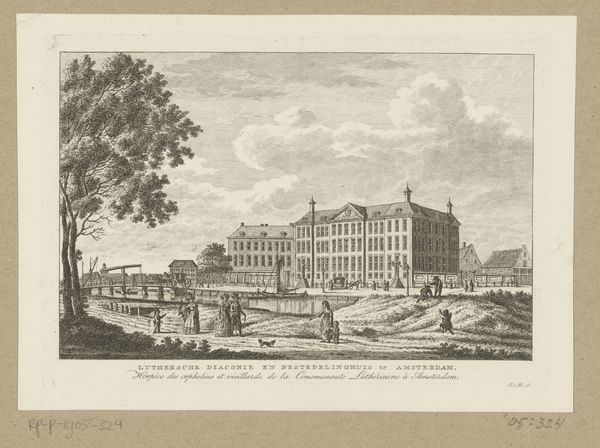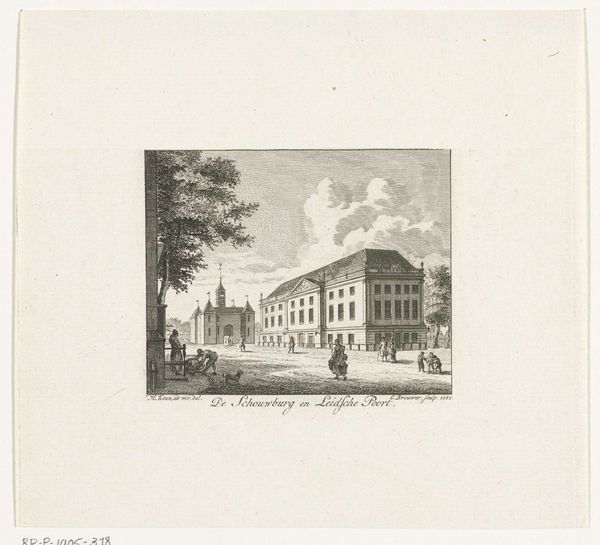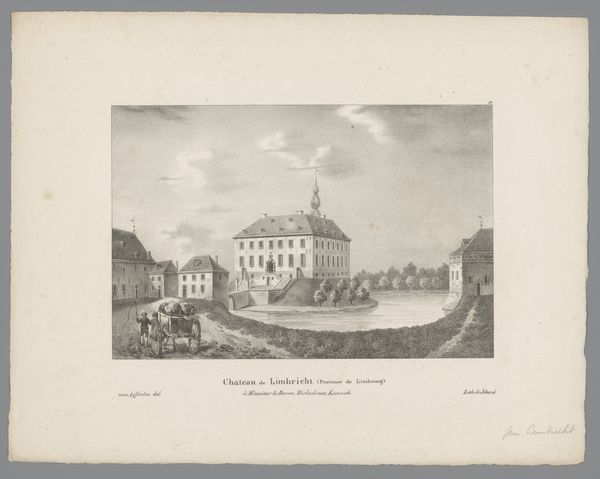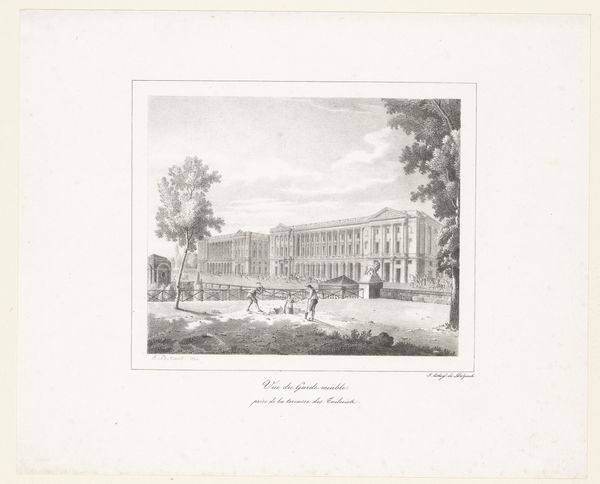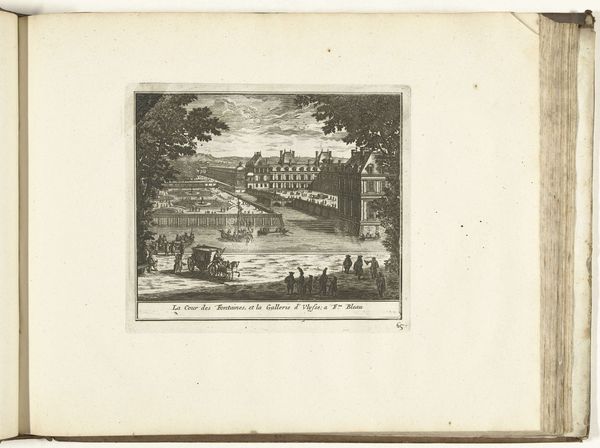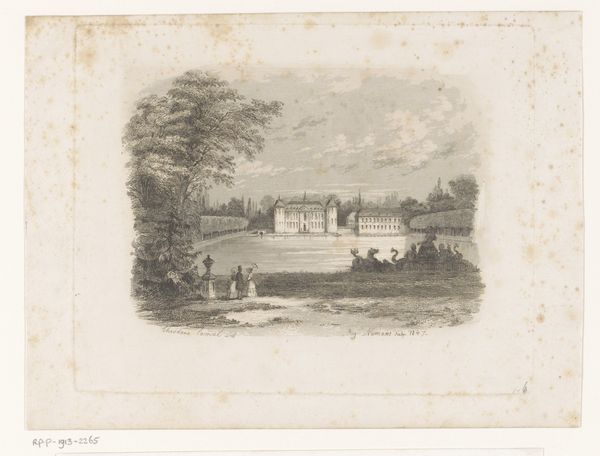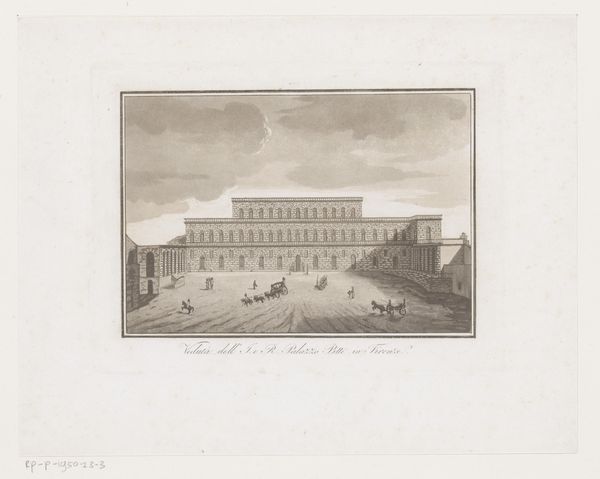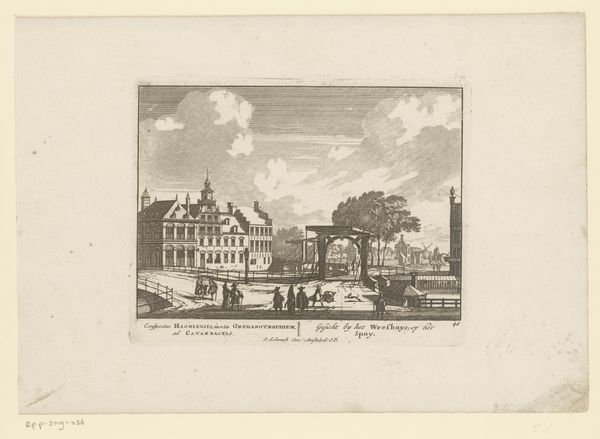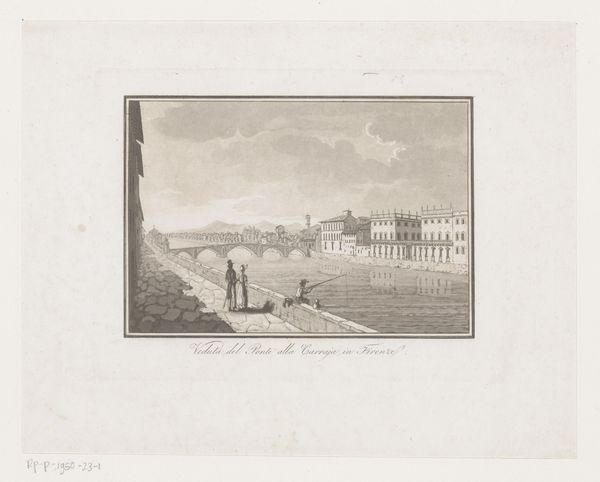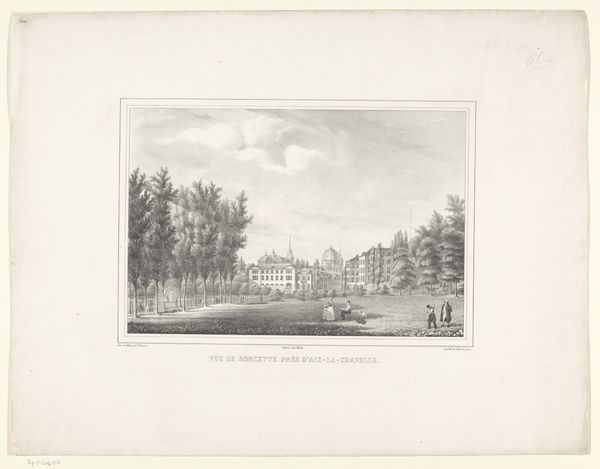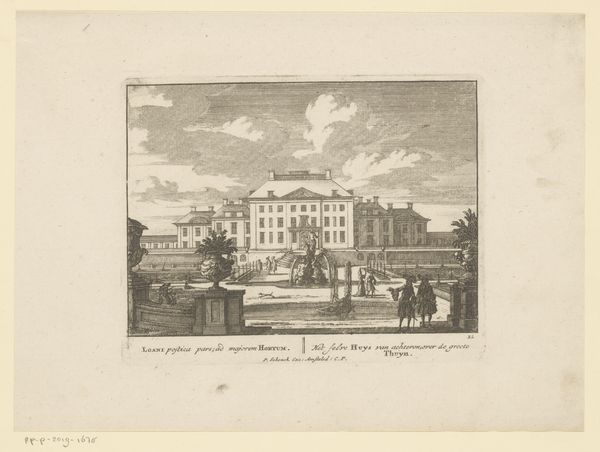
Gezicht op het Palazzina Reale delle Cascine bij Florence 1790 - 1856
0:00
0:00
engraving
#
garden
#
neoclacissism
#
landscape
#
cityscape
#
academic-art
#
engraving
Dimensions: height 159 mm, width 210 mm
Copyright: Rijks Museum: Open Domain
Curator: Giuseppe Molini brings us this serene engraving from between 1790 and 1856, titled "Gezicht op het Palazzina Reale delle Cascine bij Florence." What are your initial impressions? Editor: It’s utterly still, almost like a stage set waiting for a play to begin. Everything's so carefully arranged. What’s fascinating is the silence practically whispers off it. It’s… contemplative, almost isolating, despite the people present. Curator: That feeling of isolation is interesting, considering its subject. The Palazzina Reale delle Cascine was a royal residence. How do you think that context plays into the overall mood? Editor: Maybe that’s why it feels theatrical – it's designed to impress. Even in its quietude, it evokes performance. The carefully arranged garden leading up to the palace could mirror life. Perhaps this arrangement can be read to imply a critique of performative opulence during a period ripe with social inequality and aristocratic performance? Curator: That’s a valid observation. Academic art often engaged with the social mores of the time. The cityscape, nestled in the Neoclassical style, invites us to consider the tensions between nature and imposed order, class, leisure, and perhaps, as you said, subtle critique. Note how the people in the engraving seem like mere accents. They are deliberately diminutive, even submissive, in comparison to the landscape, suggesting the insignificance of people within the grandeur and dominion of both landscape and power structures. Editor: It does. And as an artist, you get caught between admiration for the technique - those fine lines are incredible – and unease at the cool detachment. It's pretty but distant. The whole vibe of Neoclassicism feels a bit… icy sometimes. Makes you long for a little imperfection, you know? Curator: A yearning for the real in the face of idealization. Well, through a contemporary lens, we are empowered to reimagine our relations to power and challenge inherited social constructs. What begins as beautiful may contain, as you mentioned, opportunities to consider imperfection as not something to correct, but something vital for understanding social and power dynamics. Editor: Absolutely. And maybe that's what art is about: questioning the things we see, even the pretty ones. Thanks to Molini we can dig a little deeper.
Comments
No comments
Be the first to comment and join the conversation on the ultimate creative platform.
